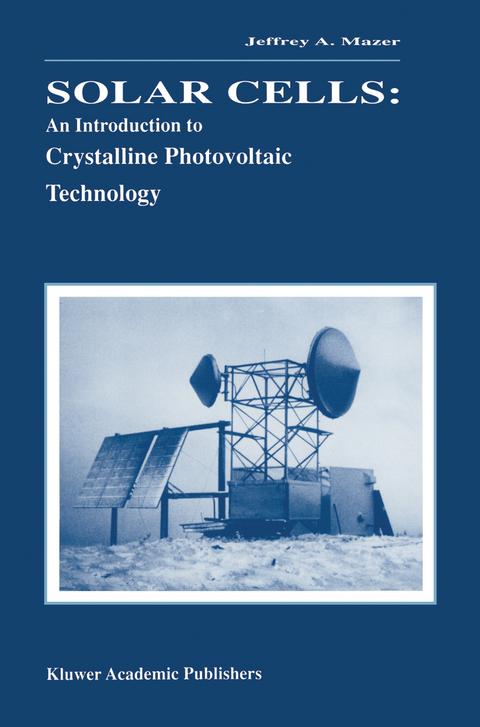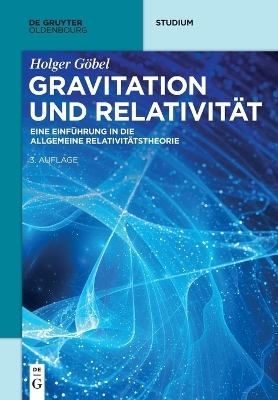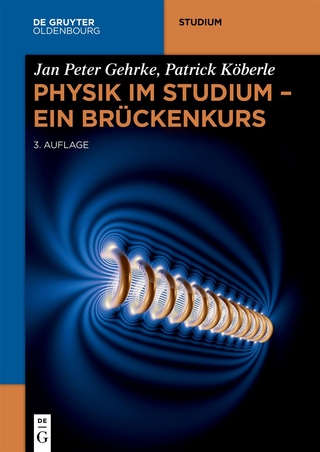
Solar Cells: An Introduction to Crystalline Photovoltaic Technology
Springer-Verlag New York Inc.
978-1-4613-8066-5 (ISBN)
The expense of extending the conventional electric power utility-grid to remote loca tions (about $20,000 per mile in the U. S. ) often prohibits the installation of electric lighting, common household appliances, television receivers, and other telecommuni cations equipment in such locations. Additionally, the installation of important, but perhaps seldom noticed, electronic equipment such as remote automatic weather moni toring stations, microwave telephone repeaters on mountain tops, and earth-bound navi gational aids for commercial aircraft and ships, is also impeded by the difficulty in providing electric power. The unavailability or expense of electric power in remote locations is a particularly acute problem in underdeveloped countries. The opportunity for people in these countries to improve their lives through technology will be mostly lost if they can not obtain even modest amounts of electricity. In a rural village, for example, just one or two kilowatts of electrical power can make a tremendous differ ence in the quality of life by providing refrigeration for food and medicinal storage, lighting for reading after dark, television reception, and water pumping and purifica tion. In the industrialized countries, there is the additional problem of the environmen tal burden of producing and distributing huge amounts of electricity in an economy which is· always hungry for electric power. However, within the last several years, photovoltaic (i. e. , crystalline silicon solar cell) engineering has become a cost-com petitive approach for ameliorating certain difficult electrical power needs in both un derdeveloped and industrialized countries.
1 An Overview of Solar Cell Technology.- 1.1 Introduction.- 1.2 Exploitation Depends on the Development of Cheap Materials.- 1.3 The Solar Spectrum.- 2 Solar Cells as Semiconductor Diodes.- 2.1 Crystalline Materials and Semiconductors.- 2.2 Some Semiconductor Properties.- 2.3 PN-Junctions.- 2.4 Starting Material for Solar Cells.- 3 Solar Cell Mechanism and Performance.- 3.1 Structure of the Generic Solar Cell.- 3.2 Photogenerated Current.- 3.3 Dark Recombination Current Opposes Photogenerated Current.- 3.4 Equivalent-Circuit Model.- 3.5 Current-Voltage Curve and Efficiency.- 3.6 Radiation Effects.- 4 Cell and Module Development.- 4.1 Process Flow.- 4.2 PN-Junction Formation.- 4.3 Performance Enhancements.- 4.4 Limitations Imposed by Screen Printing and Encapsulation.- 4.5 Module-Specific Degradation Mechanisms.- 4.6 High-Efficiency Space Cells.- 5 Non-Ingot and Novel Technologies.- 5.1 Non-Ingot Crystalline Silicon Cells.- 5.2 III-V Material-Based Systems.- 5.3 Concentrator Systems.- 5.4 Thermophotovoltaic Devices.
| Zusatzinfo | 216 p. |
|---|---|
| Verlagsort | New York, NY |
| Sprache | englisch |
| Maße | 155 x 235 mm |
| Themenwelt | Naturwissenschaften ► Physik / Astronomie |
| Technik ► Elektrotechnik / Energietechnik | |
| Technik ► Maschinenbau | |
| ISBN-10 | 1-4613-8066-9 / 1461380669 |
| ISBN-13 | 978-1-4613-8066-5 / 9781461380665 |
| Zustand | Neuware |
| Haben Sie eine Frage zum Produkt? |
aus dem Bereich


